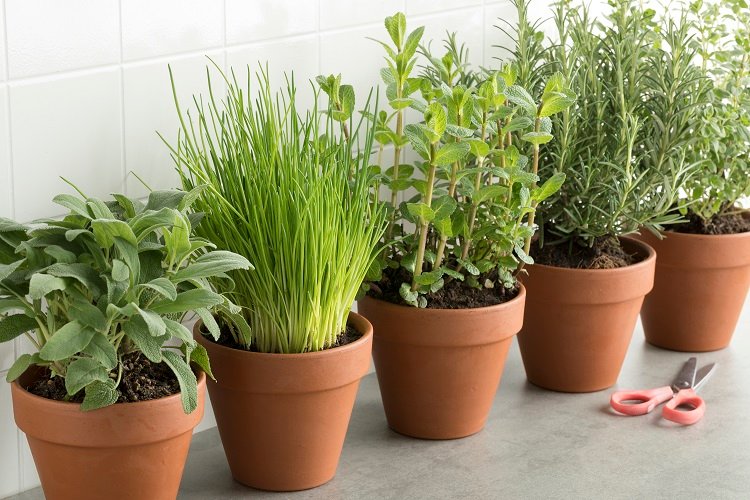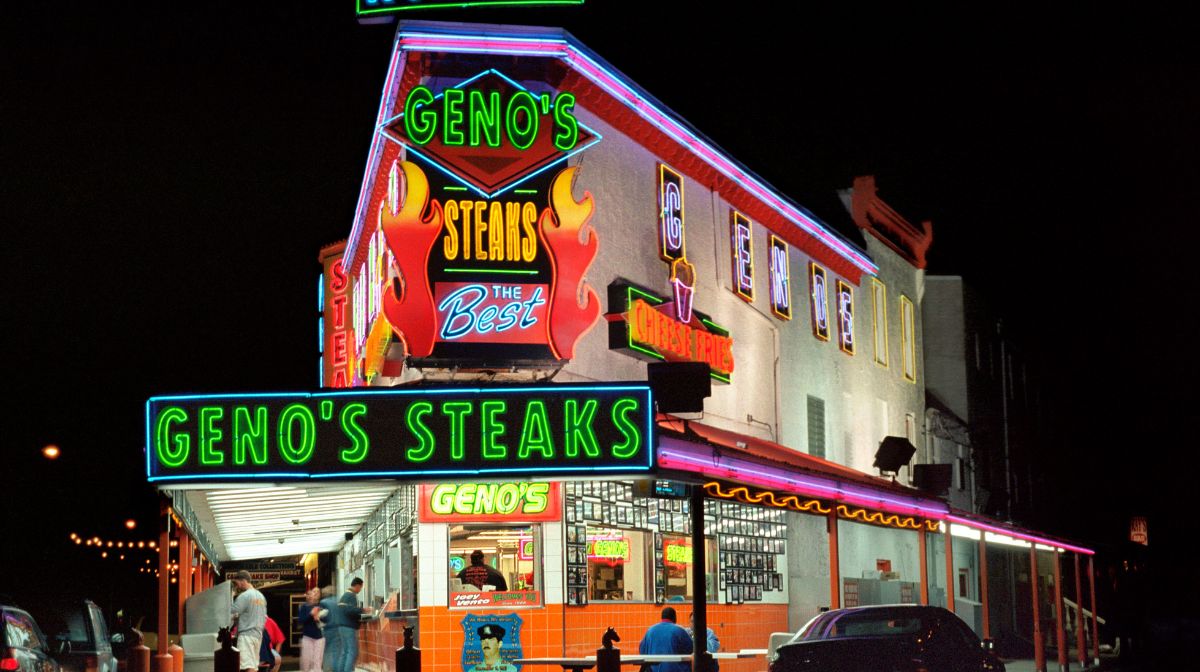A fresh herbs guide is useful for anyone who wants to learn more about cooking with fresh herbs. It typically provides information on various herbs, including their flavor profiles, culinary uses, and growing tips. (Also see Carving the Perfect Meal: A Gourmet’s Handbook to the Cuts of Lamb)
By understanding how to use different fresh herbs in cool, Basil you can enhance the flavors of your dishes and add variety to your meals. Additionally, growing your herbs can be fun and rewarding to ensure fresh herbs for your culinary creations. Common herbs included in a fresh herb guide may include Basil, thyme, rosemary, parsley, cilantro, and mint. (Also See Gordon Ramsay Butcher Chicken Guide: Cutting, Cooking, and Craving)
Learning to cook with fresh herbs has changed how I cook, and I experience the art of cooking, being rather inexpensive, especially if you grow them at home; fresh herbs are a great way to liven up any dish. They really can make an average dish into a much more exciting dish with little effort. (Learn more about Fresh Herb Guide)
Common Fresh Herbs
Fresh herbs are a popular ingredient in many dishes, and several common varieties are used in cooking. Some of the most popular fresh herbs include Basil, thyme, rosemary, parsley, cilantro, and mint. Each herb has a unique flavor profile, and culinary uses Basil to add depth and complexity to various dishes.
By understanding the different characteristics of each fresh herb, you can choose the right herb for your recipe and create delicious and flavorful meals. Additionally, growing fresh herbs can be fun and rewarding to add fresh flavors to your dishes.
About half a dozen herbs are stocked on the shelves at your supermarket, but there are many more options if you grow them yourself. Below are the top twelve herbs and tips on how to use them.
- Marjoram
- Marjoram is in the mint family; there are 2,000 different varieties of mint, with spearmint being the most common. The flavor is described as smooth and bright with a eucalyptus characteristic. To release the flavor, mint is bruised or muddled and used as a garnish.
- Italian Flat-Leaf Parsley
- Italian Flat-Leaf Parsley is a common herb recognized for its palate-cleansing astringency and a hint of lemon pepper. Stems hold full-bodied flavor and are used in soups and stocks but are harsh if uncooked.
- Thyme
- Thyme is a low-growing bushy herb that has tough leaves. There is a distinct methanol smell and deep grassy taste with a hint of Lemon. Typically is added into a dish early, and you can strip the leaves or use whole sprigs in soups and stocks. Add the whole leaves into salads or chop as a garnish.
- Cilantro
- Cilantro is also known as Chinese parsley; this herb has soapy, fragrant, and peppery notes. The cooking of this herb kills all the flavor, so it’s mostly used as a garnish. Stems and leaves can be chopped and dried, and coriander is the name of the dried seeds.
Traditional Curly Parsley
Traditional Curly Parsley has a peppery mild earth tone and simple vegetal flavor than the Italian flat-leaf version. If this herb is uncooked, it is plasticky, so it is best to allow it to cook for a long time when used in soups and sauces.
- Basil
- Basil is a family member of the mint; it’s an annual herb with tender leaves that are pointed and oval-shaped. Basil grows all over the world but is Native to India. Basil is very sweet-smelling. Basil’s spicy flavor is often the main part of Italian, Thai, and Vietnamese cooking, perfect with chicken, fish, stews, pasta, and salads. Another well-liked use for Basil is in an Italian sauce called pesto, with blended olive oil and pine nuts.
- Dill
- It pairs with Basil, both pickled and fresh, flawlessly. The Dill fronds are slightly harsh with a refreshing lemony taste and a smell like caraway seeds. It is best used at the end when the dish is finished cooking.
- Oregano
- Oregano is a wholesome and substantial perennial herb with fuzzy stems resembling spades. It is a mint family and is described as having an earthy, musty, and spicy bite. Stems should be discarded, and the leaves chopped when cooking.
- Tarragon
- Tarragon, the small-leafed herb, is known as “little dragon” in France because of its fiery quality. It has a mouth-numbing anesthetic quality and sweet-orange anise smell.
- Rosemary
- Rosemary is an Evergreen-like herb with a noticeable pine aroma. Used in small quantities, it has a taste. However, too much can be like Menthol medicine, “Vicks Vapor Rub.” Either strip the leaves and chop them or use them in the last thirty minutes.
- Sage
- Sage is used in everything from sausage to Thanksgiving dinner. It has an earth-tone taste with a floral flavor with an aromatic bite. Because it has a cottony feel when raw, I like to cook it before use in my recipes.
Tips for Cooking with Fresh Herbs
When I first started cooking using fresh herbs, I made all sorts of mistakes since all the herbs looked the same, and some seemed overpowering. It can be terrifying, but I will take you through everything you need about fresh herbs in this quick guide to impress everyone you know.
Here are some tips for cooking with fresh herbs:
- Choose the right herb: Consider the flavor and aroma of the herb and choose the one that complements your dish the most.
- Wash the herbs: Rinse the herbs in cold water and pat them dry with a paper towel before use.
- Use the right amount: Use the recommended herbs in your recipe. Remember that fresh herbs are more potent than dried ones.
- Add herbs at the right time: Add delicate herbs like Basil and cilantro to preserve their flavor at the end of the cooking process. Sturdier herbs like rosemary Basil can be added earlier in cooking.
- Chop the herbs: Finely chop them before adding them to your dish to help release their flavor.
- Store herbs properly: Store fresh herbs in the refrigerator, wrapped in a damp paper towel, to help extend life.
By following these tips, you can enhance the flavors of your dishes and create delicious culinary creations using fresh herbs.
- Cutting Fresh Herbs
- Some herbs can be cut in advance, and it does not affect the quality of the herb. However, a couple of herbs become unappetizing if chopped ahead of time. Cilantro will develop a soapy taste; Basil will turn black and slimy, and scallion (although not a true herb but treated as one, will also have a soapy taste. Best to serve all three immediately after chopping.
- Tear or Chop Fresh Herbs
- Some recipes will call for chopped, and some will call for torn herbs because they help release the natural oils and increase the flavor. After making two versions of black bean salad with cilantro and a quick tomato sauce with Basil, taste testers preferred the chopped herb versions over the torn versions. Chopping disperses the flavBasilre evenly; tearing can leave an overwhelming taste. In other words, use chopped herbs if you want a pervasive flavor.
- Important to Measure Herbs
- The best way to get the best weight is to lay the herbs flat in the measuring cup and press down slightly. Just press down enough so that there are no large pockets of air. You do not want to pack the herbs because that can lead to bruising.
How to Keep Basil Green
There’s no way to get around it, but pesto looks much better when first made. Over time that bright green color will turn into a muddy army green color. So how do you prevent this?
One way is to blanch the Basil for 30 seconds, then place it into ice-cold water. This method prevents the Basil from turning brown whBasilposed to air. Another way is to add a bit of lemon juice.
How to Measure Herbs Dry vs. Fresh
Herbs come in all sizes, weights, and shapes, so if the recipe calls for 1/2 cup of Basil, how many ounces should you buy? Here is a quick measuring chart to help:
| Wh. Leaves Per ½ Oz. | Fine BasilLeaves Per ½ Oz. | |
|---|---|---|
| Thyme, Rosemary | ½ C. | 2-2½ Tbsp. |
| Parsley, Cilantro, Dill, Tarragon, Mint, Basil | ¾ C. | 3 Tbsp. |
| Other: Chives | N/A | 4 Tbsp. |
| Oregano, Marjoram, Sage | ¾ C. | 5 Tbsp. |
Substituting Dried for Fresh Herbs
Before your fresh herbs are ready for use, it may be tempting to substitute dry herbs for fresh ones. But how does this affect the cooking?
I did some research and purchased fresh and dry versions of various herbs. I made five recipes using fresh for one version and dry for another and compared the taste. Most tasters preferred the fresh one because the dried one seemed to have lost some of its flavor.
Dried oregano, sage, thyme, and rosemary seemed to be passable using either preparation in recipes that called for long cook times and a lot of liquid. The dry seemed stale and dusty upon taste. Fresh herbs, on the other hand, tasted bright and clean.
Some flavor components are stable, so they can keep flavor even after drying and cooking.
Other flavor compounds are volatile, which means they lose flavor easily during this process. Delicate herbs are more volatile, so they are better fresh, and sturdier herbs can be used in either form.
Recipes with a lot of liquid can also rehydrate the cells in those herbs to release more aroma. No matter the recipe, dry herbs will reduce dust and stale quality slightly because of the drying process.
The big takeaway from this research is that if a recipe calls for delicate herbs, it is best to stick to fresh herbs. However, substituting dried herbs is acceptable if the recipe demands sturdier ones.
Dried herbs are more potent than fresh, so you should use 1 part dry and 3 part fresh herbs to achieve the same result.
Preparation Techniques and Guidelines
Preparation techniques and guidelines for fresh herbs can vary depending on the herb and the recipe used. However, there are some general tips to remember when preparing fresh herbs. First, washing the herbs thoroughly and drying them before use is important. Additionally, using the right amount of herbs to achieve the desired flavor is important.
Chopping the herbs finely can help release their flavor and aroma, and adding delicate herbs at the end of the cooking process can help preserve their flavor. Storing fresh herbs properly, such as in the refrigerator wrapped in a damp paper towel, can help them last longer. By following these guidelines and techniques, you can enhance the flavors of your dishes and make the most of fresh herbs in your cooking.
I learn some cooking techniques with fresh herbs you need to know and understand as you work through this guide and continue cooking at home.
Washing and Storing Fresh Herbs
Washing and storing fresh herbs properly is an important part of using them in cooking. When washing fresh herbs, it’s important to rinse them in cold water and pat them dry with a paper towel before use. This can help remove any dirt or debris that may be present on the herbs. Storing fresh herbs properly is also important to help them last longer.
By properly washing and storing fresh herbs, you can ensure they are clean and fresh for your culinary creations. One common method is to wrap the herbs in a damp paper towel and store them in the refrigerator. Another method is to store them in a glass of water like a bouquet.
You can place them upright in a cup of water at room temperature, wrap them in a barely damp paper towel, place them in a zipper-sealed plastic bag, and store them in the fridge.
Preparing Fresh Thyme
If the thyme has tender stems, chop down the leaves and stems with your chef’s knife until you reach the tough bottom portions. Discard the tough portions.
For woodier thyme, hold the stems at the top and run your other thumb and forefinger down the stem to pull away from the smaller leaves and smaller, tender offshoots. Gather the pieces of thyme into a pile in the middle of the cutting board.
Use your chef’s knife to mince the thyme by rocking your knife back and forth over the thyme. Regather and repeat until finely minced.
How to Chiffonading Fresh Basil
- Wash and dry the Basil. Then stack similar-sized leaves onto the cutting board. Roll the leaves lengthwise into a small bundle.
- The leaves should be secure but not crushed because they can bruise them. Slice across the bundle; spacing cuts 1/4 inch apart. If need be, use a ruler to check your spacing.
- Use a sharp knife to avoid having a soggy chiffonade with bruised Basil.
Dehydrate Fresh Herbs in a Microwave
Only use this method if you use hearty herbs like bay leaf, oregBasilrosemary, sage, thyme, mint, and marjoram.
- Tender herbs like Basil, cilantro, dill, and parsley can combust in the microwave. Line a microwave-safe plate with a paper towelBasil place the herbs in a single layer on the plate.
- Microwave until the herbs look slightly dehydrated, about 1 to 3 minutes. Be sure to watch carefully as they cook. Remove the plate from the microwave and let it cool to room temperature.
- When completely cooled, crumble or leave whole. Store in a tightly sealed plastic bag until use.
How to Make a Bouquet Garni
Gather the herbs and spices and place them in a pile. I tie them together so they are easy to add and retrieve from a pot. Cheesecloth is the best to contain the small components in the bouquet garni.
If you don’t have cheesecloth, you can use a coffee filter tied around the herbs to hold them together. Place your bundle in a pot and use it as directed in your recipe.
When the stew is finished, gently squeeze the bundle’s sides to extract the flavors before taking it out of the pot.
Growing Your Fresh Herbs
Growing herbs yourself has a lot of great benefits. Cutting the sprigs right before use gives you maximum flavor and nutrients. Also, you do not waste as much because you only take what you need for that moment.
Every plant is different and requires different harvesting methods. Snip the leaves with scissors instead of pulling with your fingers is always a good idea. Remove older leaves first so that growth can be stimulated. Then work to the younger leaves.
Herbs are a great way to spice up any dish and a great way to add nutrients to a dish. With this guide, you can make any dish better by using herbs. Even if it does not come out expected the first time, try again, and eventually, you will make dishes that will impress everyone, you know.
Try expanding the types of herbs you use to experience all the different flavor profiles worldwide and not get stuck on using the same herbs repeatedly. Even adding one extra herb will make all the difference.







